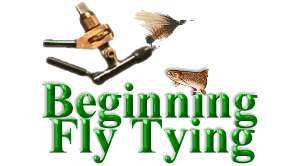If you live in an area that has spring
creeks or tailwaters, you likely live in
an area that has scuds. You also are likely
to have a lot of midges in the streams,
especially in fall, winter and spring.
Unless you're a dry fly purist, you'll
want to have a few of these goodies in
you fly box.
Before we start on the flies, it would be
a good idea to discuss dubbing a minute.
Dubbing is what we call the stuff you twist
around the thread to make fly bodies. We've
already used some pre-packaged dubbing, but
we haven't created any of our own. It's easy
to create your own dubbing though. All you need
is a coffee grinder or a blender and some fur
or yarn. You might also find a little good
dubbing in your clothes dryer screen after you
wash a throw rug or wool coat or sweater.
Just remember, cotton is not a good type of
dubbing.
If you set out to make your own dubbing, first
you need some raw materials. Macramé yarn,
sparkle type knitting yarns, animal under furs,
carpet yarns, poly yarn, dacron, antron and
rayon all make good dubbing materials. For
fine dubbing, the under fur of some animals
is a good choice. Mink, beaver, muskrat,
opossum and rabbit fit this category. For
coarse dubbing, yarns (especially the course
type), short hairs from the ears, feet and
face of certain animals, antron, krystal flash
and wool are good sources.
Experiment a little and you'll open up a whole
new arena of materials you can use in your tying.
A good example of what I'm talking about is the
scud pattern we'll tie this week. The dubbing is
a coarse macramé yarn I cut into short pieces
(about 1/4 to 1/2 inch) and toss in the blender
and mix with sparkle yarn from the fabric store.
I keep adding yarns until I have the right color
and texture blend for what I want to tie. Stop
by a few yard sales for an old blender and some
macramé or knitting yarns and give it a try.
On to this week's flies.
Scuds are not flies but rather crustaceans of
the amphipod family. Their closest relatives
are beach fleas you might find on the coast
somewhere, but they belong to the broad family
of crustaceans that includes crayfish, lobsters,
sowbugs, crabs and shrimp. They are often
called freshwater shrimp because they resemble
shrimp in many ways. If you care to count,
(the fish never do) they have seven pairs of
legs and swim with a short, jerky sideways
motion.
Scuds are important to the fisherman because
they provide a large part of the fish's diet
in waters where they are abundant. In some
cases, the fish feed almost exclusively on scuds.
Since that's the case, scuds should be one of
the patterns in your fly box.

|




















